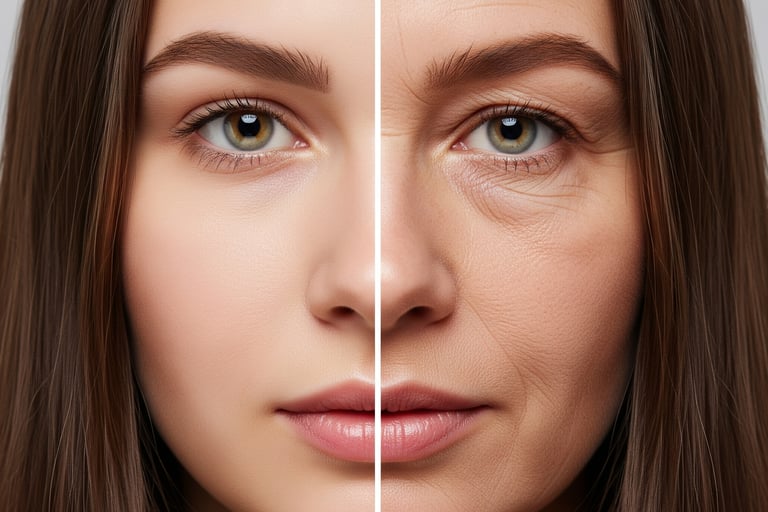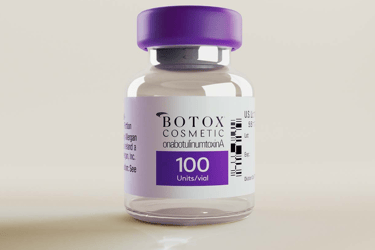Exosomes vs. Botox: Which Is Better for Wrinkle Reduction?
3 min read
Aging is inevitable—but how we age is increasingly up to us. Whether you're battling the first fine lines or deeper expression wrinkles, modern aesthetics offer a growing range of treatments to turn back the clock. Two of the buzziest options today? Exosomes and Botox.
While Botox has long held the crown for wrinkle-smoothing, exosome therapy is gaining attention for its regenerative, skin-healing powers. So how do they stack up?
What causes wrinkles?
Wrinkles generally fall into two categories: expression lines and fine lines related to dullness and aging. Expression lines—also known as dynamic wrinkles—are caused by repetitive facial movements like frowning, smiling, or squinting. They typically appear on the forehead, around the eyes (crow’s feet), and between the eyebrows. In contrast, fine lines and skin dullness are the result of collagen loss, dehydration, and sun damage over time. These tend to be more subtle and are often seen around the cheeks, mouth, or under the eyes. While Botox is most effective for softening expression lines by relaxing the underlying muscles, exosome therapy targets fine lines and dullness by rejuvenating the skin at the cellular level, improving overall texture and radiance.


What Are Exosomes?
Exosomes are microscopic messengers released by stem cells. In skincare, they’re harvested and used to stimulate collagen production, improve skin texture, and promote repair at the cellular level.
Often applied through serums or combined with treatments like microneedling, exosomes don’t “freeze” muscles —instead, they revitalize the skin from the inside out.




What Is Botox?
Botox is a purified neurotoxin that temporarily relaxes muscles to reduce the appearance of wrinkles caused by facial expressions—like crow’s feet, frown lines, and forehead creases.
It’s quick and effective, making it a go-to for those looking for fast and visible results. However, its effect wears off after 3–6 months, requiring repeat injections.
Which One Should You Choose?
Go for Botox if: You want quick results for deep expression lines (like frown lines or forehead wrinkles), and are comfortable with injectables.
Try Exosomes if: You’re looking to boost your skin’s natural repair process, improve texture, and invest in long-term skin health.
Pro Tip: Many dermatologists suggest a combination approach—Botox to relax deep wrinkles and exosomes to support skin regeneration for an overall youthful look.
Final Thoughts
When it comes to wrinkle reduction, there’s no one-size-fits-all. Botox delivers fast, targeted results for dynamic wrinkles, while exosomes offer a cutting-edge, regenerative approach to skin aging. The best treatment depends on your goals, skin condition, and comfort level. Consult with a board-certified dermatologist or aesthetician to design the right plan for you. Wrinkles may be inevitable—but your skincare can be strategic.
Reference
Vyas KS, Kaufman J, et al. (2023). "Exosomes: the latest in regenerative aesthetics" Regen Med. 2023 Feb;18(2):181-194 [PubMed]
Proffer SL, et al. (2022). "Efficacy and Tolerability of Topical Platelet Exosomes for Skin Rejuvenation: Six-Week Results" Aesthet Surg J. 2022 Sep 14;42(10):1185-1193 [PubMed]
Zheng HH, et al. (2024). "Experimental study on the effect and mechanism of adipose stem cell-derived exosomes combined with botulinum toxin A on skin trauma in rats" J Cosmet Dermatol. 2024 Jan;23(1):271-283 [PubMed]
https://jcadonline.com/exosomes-comprehensive-review-practing-dermatologists/
https://drali.com/answers-to-15-frequently-asked-questions-about-exosome-facials/
Disclaimer: The information provided on this website is for educational purposes only and is not intended as medical advice. No exosome product discussed or referenced herein has been approved by the U.S. Food and Drug Administration (FDA). Individuals seeking medical advice or treatment should consult with a qualified healthcare professional.